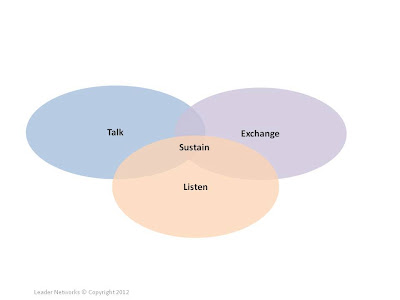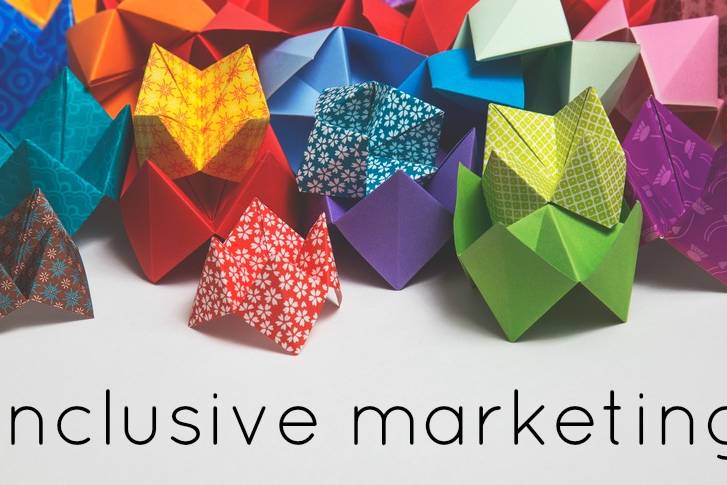 Recently, I blogged about measuring engagement in online communities. The post and accompanying framework were focused on measuring engagement within private online communities – primarily B2B. But there is a wider need for organizations to build engagement with community stakeholders wherever they are on the social channel.
Recently, I blogged about measuring engagement in online communities. The post and accompanying framework were focused on measuring engagement within private online communities – primarily B2B. But there is a wider need for organizations to build engagement with community stakeholders wherever they are on the social channel.
For the moment, marketing and “influence relations” professionals are the primary voices of the company. These professionals measure and define success by their ability to get a corporate message out to the world. Social media can be a fast and effective way to accomplish this goal. But difficulties arise when communications professionals have to shift from monologue to dialog, from broadcasts to authentic conversations.
Today’s professional communicators strive to create catchy headlines or visual hooks to snag someone’s attention, then deliver a snappy message (text, audio, image, video) into the reader’s, listener’s or viewer’s waiting “attention bucket.” The pros have to work fast — attention spans are short and the bucket keeps moving on. The communicators look for trends and future topics that are just starting to catch fire, hoping to be the first one to snag attention and deliver the message. Almost all their time and effort goes into honing the language, imagery, positioning and channels. The number of attention buckets filled is the key success metric.
The problem is one of engagement. Specifically, what happens AFTER the message has been delivered? What’s the follow up activity? Most of the time, the intent of the message is to inspire some action: download a paper, attend an event, re-tweet information, visit a website, make a purchase.
Let’s assume the message makes it into the attention bucket. It’s a rare message that stimulates immediate action. More often, message recipients (customers, prospects, influencers) take time to discover how the message relates to them, considering the information, educating themselves on the topic, reviewing ideas, formulating or solidifying their opinions, raising questions and weighing pros and cons. This is the decision process. It’s the time between information received and taking — or not taking — an action. It’s a golden opportunity for communications professionals to engage with individual decision-makers. And most of the time it’s a missed opportunity.
Too often, communicators fall back on old rules: stay on message, don’t answer questions that may reveal vulnerabilities, reiterate the corporate position and brand identity. It’s a “better safe than sorry” rule for risk-adverse communicators and their organizations. In today’s social milieu, this gets translated into “don’t talk back,” “don’t respond to tough questions” or “don’t engage around topics that stray from the message.” But today the risks are much greater when organizations fail to engage — so long as there is a clear strategy and tactical plans for managing engagement.
When professional communicators know how to ask questions, solicit feedback, offer answers and build relationships based on discovering what is on each person’ mind during their discovery and decision process, the organization can have far more influence, can clarify the firm’s position, overcome objections, dispel myths and respond to hidden agendas.
Here is how the Influence Engagement Cycle works. A communications professional begins by sharing information electronically. But instead of just post-and-go, the professional checks with a few established relationships to gather quick feedback, ideas, information and to monitor the wider reaction. Naturally, someone will surface a question, an issue or a problem. That someone is searching for an answer or a response, directly or indirectly via commentary. This is the golden moment for influence and building engagement, when the communicator responds to the person or to a wider audience. The interaction sets in motion a direct or indirect information flow via social channels and connections to get the problem solved or the question answered.
It’s called “social media” for a reason. When we humans are assisted by another we naturally feel gratitude or appreciation. Usually we reciprocate — one good deed deserves another. In the online milieu, this sense of reciprocity plays out as a need to help another person or share the information we just received. Re-tweets, shared links, comments and discussion group posts are all manifestations of this desire to assist others. The connections flow back to the person or organization who helped us, and forward to those who we have helped. Consider what a company communicator’s role might be in this network of reciprocal connections.
Once the information flow begins, connections continue to expand. This persistent information flow creates a robust body of work about the product, service or company. When positive or informative, the company benefits. When it is negative or misleading, the company suffers — especially if it is not well-represented in the information flow cycle. A company which is getting negative attention through the channel but is unable or unwilling to respond is much more likely to continue to experience negative information flow.
In any case, the influence engagement cycle is the critical aspect of the information flow. When a company becomes involved in the engagement cycle, it can share accurate information in a timely fashion. The firm can foster relationships with influencers to expand the cycle of connected communications, thus increasing the breadth of engagement and the impact these relationships can have on the organization. This can bring the company into the middle of the discovery and decision process as a trusted partner and advisor.
Just think of it as a dialog, not a monologue.
Warning: Attempt to read property "base" on array in /home3/trusten9/public_html/leadernetworks/wp-content/plugins/wp-user-profile-avatar/shortcodes/wp-user-profile-avatar-shortcodes.php on line 665
Warning: Attempt to read property "base" on array in /home3/trusten9/public_html/leadernetworks/wp-content/plugins/wp-user-profile-avatar/shortcodes/wp-user-profile-avatar-shortcodes.php on line 665
Warning: Attempt to read property "base" on array in /home3/trusten9/public_html/leadernetworks/wp-content/plugins/wp-user-profile-avatar/shortcodes/wp-user-profile-avatar-shortcodes.php on line 665
Warning: Attempt to read property "base" on array in /home3/trusten9/public_html/leadernetworks/wp-content/plugins/wp-user-profile-avatar/shortcodes/wp-user-profile-avatar-shortcodes.php on line 665
Related Posts
January 27, 2017
What does customer intimacy really look like?
Our events were unique because they delivered something our customers couldn’t…
December 15, 2015
Why Inclusive Marketing should be on Your Agenda for 2016
Your guide to doing inclusive marketing - the right way!
4 Comments
Add comment Cancel reply
This site uses Akismet to reduce spam. Learn how your comment data is processed.



Excellent insights on a difficult subject. With the internet moving so fast, you’re right, the pros are watching where the next discussion might burn bright, honing their message and getting into that place. Moving fast, not looking back in the mirrors much. The creep of information – as the internet moves over it, others come and add to comments, extend them, duplicate them, regurgitate them – can be very resource intensive to keep a handle on – and though it’s important, it’s never P1, or P2, or often something that a handle is kept on at all. Time will tell how far information creep will take our interactions as they abound like chinese whispers through it – is it really manageable, policeable? The obvious answer is: too much internetz, I’ve no answers, but thanks for the thought provacation.
Luke W
Community Manager
OneDesk
Dialogs may appear to be the choice over monologues, but businesses’ profit-oriented attitudes ultimately make dialogs difficult to attain. A dialog would require genuine interest in the consumer, beyond sales generation.
Engagement is the key to maintain a formidable customer relationship. With the world becoming more and more social, it is advisable to engage qualitatively with the audience in order to the the results you are looking for.
Thank you both for your comments and so sorry I didn’t respond sooner – strangely my blog software didn’t notify me. Kind of ironic given this is a post about dialogue but one was absent here.
You both raise excellent points, it is difficult to police and manage conversations, and therein lies the perceived risk by many organizations. However, in the end, good relations actually reduce risk not enhance it!
warm regards,
Vanessa